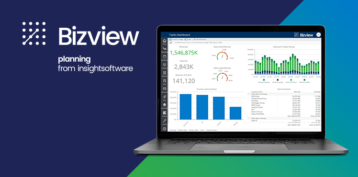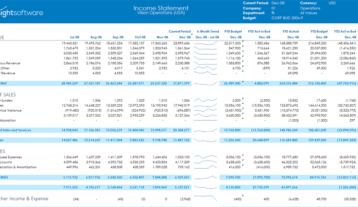Unified Data Clears the Roadblocks of Your Hybrid Cloud Journey

Cloud computing is proliferating businesses across all industries. According to a recent survey by the Harvard Business Review, 81% of respondents said cloud is very or extremely important to their company’s growth strategy. Overall, nearly two-thirds of senior executives stated their businesses have accelerated their plans to migrate to the cloud.
Although many companies run their own on-premises servers to maintain IT infrastructure, nearly half of organizations already store data on the public cloud. The Harvard Business Review study finds that 88% of organizations that already have a hybrid model in place see themselves maintaining the same strategy into the future.
This scenario may sound familiar: you’re moving from on-premises Oracle EBS to Fusion Cloud ERP. Given your organizations focus on productivity, you know soon your team will working in a divided reporting environment. While the cloud infrastructure promises to bring positive changes, your company’s data will exist in both worlds: on-prem and the cloud. With relevant data spread across many disparate systems, how can your team hope to maintain efficiency and productivity?
Reasons for Lingering On-Premises
Many companies are willing to experiment with the cloud in other parts of their business, but they feel that they can’t put the quality, consistency, security, or availability of financial data in jeopardy. Thus, finance data remains on-premises. Unless there is a compelling reason to move their financials onto a cloud financial platform, companies may choose to not take the risk.
Customization is another big reason companies stay on-premises. Many companies have carefully personalized their ERP over the years to fit their unique financial function. Cloud ERPs cannot adapt in the same ways, and even if they could, adjusting everything during a major data migration requires intensive effort. For some organizations, making do with the ERP they have looks more appealing than trying to adapt to a largely one-size-fits-all cloud solution.
Ripping the band-aid off and adapting all processes to something new runs huge risk of killing efficiency and productivity across the board. Instead, if a company faces either of these challenges, it’s likely they will continue to invest in their on-premises ERP, preferring an incremental approach to cloud migration.
Accept and Address the Financial Impact of Cloud Adoption, 2023
Download NowHybrid ERP – The Best of Both Worlds?
A hybrid ERP environment involves integrating both on-premises and cloud-based systems to manage an organization’s business processes. While you can maintain efficiency through your legacy ERP, aligning data and processes with your new cloud system comes with its challenges.
Pros:
- Smooth Transition and Flexibility: A hybrid ERP environment allows finance teams to move specific processes or functions to the cloud while keeping critical operations on-premises. This gradual transition minimizes disruption to ongoing financial processes and provides flexibility in adapting to cloud technology at a manageable pace.
- Optimized Resource Allocation: Finance teams can strategically allocate resources in a hybrid ERP environment. They can offload non-core or less critical tasks to the cloud, freeing up on-premises resources for more specialized financial functions. This optimization leads to improved efficiency, reduced operational costs, and better resource utilization.
- Mitigated Risk and Data Control: Finance teams can retain sensitive financial data on-premises while leveraging the cloud for less sensitive functions. This approach helps mitigate risks associated with data security and compliance, while still harnessing the benefits of cloud scalability and innovation.
- Cost Optimization: The hybrid model allows finance teams to balance their expenses effectively. Non-sensitive data or less critical applications can be hosted on public cloud platforms, while sensitive financial data can be kept on-premises or in a private cloud for better security and compliance. This strategy can help optimize costs by only paying for the resources that are truly needed.
Cons:
- Integration Complexity: Integrating on-premises systems with cloud-based Oracle ERP solutions can be complex and challenging. Data synchronization, security considerations, and ensuring smooth communication between different systems require careful planning and execution, potentially causing delays and disruptions during the transition.
- Data Security Concerns: Managing data security and compliance across hybrid environments can be a significant concern. Financial data is sensitive and requires robust security measures. Maintaining a secure connection between on-premises and cloud components, as well as ensuring data encryption and regulatory compliance, can be demanding.
- Potential Downtime and Disruption: During the migration and integration process, there’s a risk of system downtime and disruption to finance operations. Incomplete or improper integration can lead to data inconsistencies, errors, and delays in critical financial processes, impacting the accuracy and timeliness of financial reporting.
- Increased Management Overhead: Operating in a hybrid environment requires managing both on-premises and cloud-based components. This can lead to increased management complexity, as finance teams need to monitor, update, and maintain systems across different environments. Ensuring consistent performance, reliability, and data synchronization may require additional resources and effort.
These cons are significant and can be enough for executives to hit pause on cloud migration. However, the right cloud-friendly tools can mitigate the above challenges. Acting as a layer that sits over both ERP instances, the right reporting tool will connect your data sources in one central repository, allowing for efficient reporting of all relevant figures and boost collaboration throughout the whole process.
Your Tool for a Smooth Cloud Migration
A multi-source reporting tool like Angles for Oracle is essential for finance teams operating in a hybrid ERP environment on route to cloud migration. It streamlines data integration, ensures real-time access to accurate information, enhances collaboration, and provides the flexibility needed to adapt to evolving ERP systems and business requirements.
- Simplify Data Integration: Angles for Oracle offers data transformation and cleansing features that allow finance teams to clean, standardize, and format data as needed. Data transformation ensures that the data aligns with the requirements of the new cloud ERP system. Angles also enables finance teams to map fields between source systems and the cloud ERP, ensuring that data is correctly transformed and loaded into the new environment.
- Boost Security: Angles for Oracle data encryption and role-based access boost the security of your data as you align it to fit the new Oracle cloud environment. Encryption ensures that sensitive data remains unreadable and protected from unauthorized access during data integration and transfer processes. Restricted access to specific data sources, reports, or dashboards ensures that only authorized personnel can view and interact with sensitive financial information.
- Maintain Productivity Through Migration: Angles for Oracle offers a familiar reporting environment for finance professionals. Regardless of the underlying data sources, the reporting tool provides a standardized interface, report templates, and engaging dashboards. This familiarity minimizes the learning curve and allows finance teams to focus on their tasks rather than adapting to new reporting tools.
- Report Across Both Instances in Real-Time: Angles for Oracle provides access to Oracle Cloud Applications modules and near real-time replication and reporting views on the cloud based ODS. This means that as data is migrated to the cloud ERP, finance teams can continue to access up-to-date information without delays. Real-time data availability ensures that critical decision-making processes are not hindered by data transition activities Angles is also built for today’s cloud-first IT, with support for hybrid deployments that offload processing from the primary database to a Microsoft Azure or Snowflake data warehouse.
Our Webinar Breaks it all Down
Watch our on-demand webinar here to see if Angles for Oracle is right for your cloud journey. Our experts will break down the valuable insights Angles delivers to your team to facilitate that flexible, smooth, successful cloud journey you need.
You’ll learn how to:
- Simplify and accelerate data access and data validation with the ability to perform side-by-side comparisons of data from on-premises and Cloud ERP.
- Quickly and easily identify data quality or compatibility issues prior to migration for successful data cleanup and configuration.
- Save time and money by reducing the need for external consultants and avoiding license fees for maintaining your legacy ERP.
- Get fast time-to-value with an easy, lightweight installation and short learning curve.








